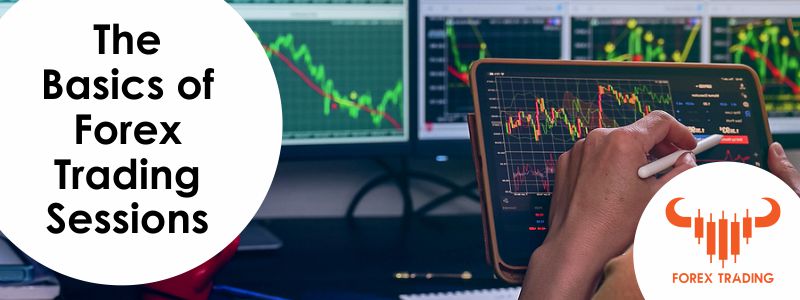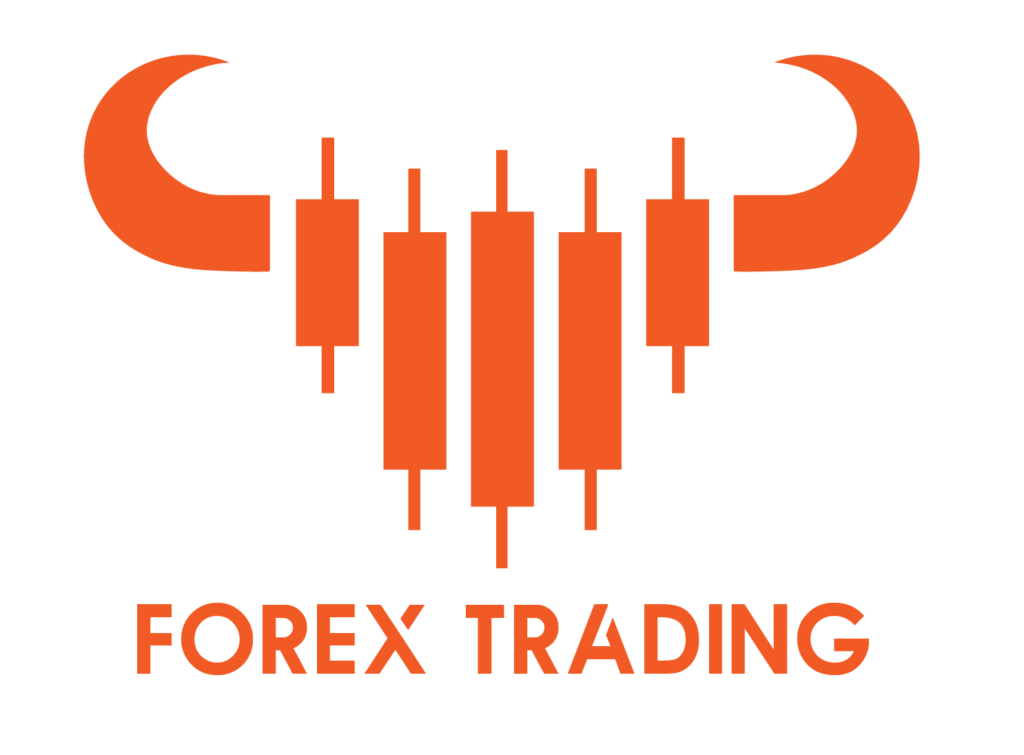 If you are curious about the 4 main Forex trading sessions and 8 strategies you can use to trade during certain times of the trading day, then this guide about the Basics of Forex Trading Sessions should give you a better understanding of when to trade and how.
If you are curious about the 4 main Forex trading sessions and 8 strategies you can use to trade during certain times of the trading day, then this guide about the Basics of Forex Trading Sessions should give you a better understanding of when to trade and how.
You might not know this, but the Forex market never actually stop running – at least not during the week – which means that thousands of people from all around the world are trading all day and all night, and prices are constantly moving.
Forex trading sessions are named after major international financial centers and are based on the average “working day hours” in those cities.
However, in the spirit of trading responsibly and mitigating financial risks, we highly recommend that you do NOT trade 24/7 simply because the markets are always open.
Leaving trades open overnight may incur overnight holding fees and if you fall asleep with trades open, you could potentially lose money – and probably will.
The only time leaving trades open may be feasible, is if you use EAs and trading bots, or you have a very specific strategy that is proven to work and requires you to do so.
The best times to trade would be when the Forex market is busy and lots of trades are being opened and closed, which essentially means that trading volumes are high and prices are moving.
The time you choose to trade is an important factor to keep in mind because it’s unlikely that you’ll make any profits if the markets aren’t moving and when trading volumes are higher, the spreads will always be lower!
What is the International Date Line (IDL)?
The IDL is an imaginary line that is drawn across the Earth and runs from North to South. The fascinating thing about this line is that crossing it will determine whether you are one day ahead or one day behind, and crossing this line is often what gives people Jet Lag. It literally puts your body’s internal clock out of sync!
This line basically sets boundaries between calendar dates because it is not daytime at the same time all around the world and this invisible line helps to divide the world into timezones, which makes 24hour-days possible.
This really takes “time management” to a new level, because where would we be without the IDL and what would the point of clocks be if we had nothing to reference to?
A fun fact: each new day on Earth begins at midnight in Greenwich, England. This is where the prime meridian is located.
If you are a Forex trader, it is important to know that each new Forex day is synchronised to the IDL and the first market to open every day is New Zealand and the Sydney Session.
How is time measured?
That question seems loaded and it really depends how far back in history you’re willing to go, but to keep things simple, time is measured on a clock.
Jokes aside, time is actually measured in time zones, which are measured based on the Earth’s rotations on its axis. Every 60 minutes, the Earth rotates about 15 degrees and after 24 hours, it has completed a full 360 degrees and one Earth day has passed. It may also be worth your while researching the concept of “Solar Time” if this interests you.
The 2 main time zones that are generally referenced worldwide are:
- GMT (Greenwich Mean Time) – located at the London Greenwich Observatory and used as the starting point of measuring time zones on Earth; and
- UTC (Coordinated Universal Time) – the time standard for all clocks globally and necessary for the regulation of time and it runs almost parallel to Solar time.
Time zones in Africa
There are 24 time zones globally, with only 6 in Africa and only 2 in South Africa.
The following time zones will be relevant to this specific article:
- West Africa Time Zone WAT (UTC+1)
- Central Africa Time Zone CAT (UTC+2)
- East Africa Time Zone EAT (UTC+3)
- Nigeria Time
- South Africa Time Zone (UTC+3)
- Egypt Cairo Time
Forex Market trading times in South Africa
In South Africa, Johannesburg the Forex market operating hours are as follows:
| SAST Period | Start and End Times |
| Download only | 05:00 AM – 08:00 AM |
| Admin and download | 08:00 AM – 09:00 AM |
| Automated trading | 09:00 AM – 05:00 PM |
| Admin | 05:00 PM – 06:00 PM |
| Market in Download only | 06:00 PM – 03:00 AM |
Open and close times for sessions
Trading hours are the timeframes you have to open and close your trading positions, to exchange currencies and to speculate on price movements.
You will notice that Forex trading sessions overlap at 7 AM, 2 PM and 5 PM and these are usually the best times and busiest times to trade.
Trading sessions are affected by daylight savings (DST), which is when clocks are adjusted depending on the seasons. Clocks are usually set one hour ahead in warmer months and one hour behind in colder months, but this practice is not common in South Africa and the last time DST applied in SA was in 1944.
However, DST will still affect the open and close times of the Forex markets and it will usually happen around March or April, and October or November.
Please note: The New York session will close every day for two to five minutes.
Open and close times for sessions in South Africa during Winter:
The open and close times for Forex trading sessions are as follows:
| 24 HOUR DAY | SYDNEY | TOKYO | LONDON | NEW YORK |
| 00:00 AM | OPEN | |||
| 01:00 AM | OPEN | OPEN | ||
| 02:00 AM | OPEN | OPEN | ||
| 03:00 AM | OPEN | OPEN | ||
| 04:00 AM | OPEN | OPEN | ||
| 05:00 AM | OPEN | OPEN | ||
| 06:00 AM | OPEN | OPEN | ||
| 07:00 AM | OPEN | OPEN | ||
| 08:00 AM | CLOSE | OPEN | ||
| 09:00 AM | OPEN | OPEN | ||
| 10:00 AM | CLOSE | OPEN | ||
| 11:00 AM | OPEN | |||
| 12:00 PM | OPEN | |||
| 1:00 PM | OPEN | |||
| 2:00 PM | OPEN | OPEN | ||
| 3:00 PM | OPEN | OPEN | ||
| 4:00 PM | OPEN | OPEN | ||
| 5:00 PM | OPEN | OPEN | ||
| 6:00 PM | CLOSE | OPEN | ||
| 7:00 PM | OPEN | |||
| 8:00 PM | OPEN | |||
| 9:00 PM | OPEN | |||
| 10:00 PM | OPEN | |||
| 11:00 PM | OPEN | CLOSE |
The Forex exchanges only closed on two dates:
- Christmas Day
- New Year’s Day
When is Forex Trading closed?
The Forex market never closes, but there isn’t much of a point in trading over weekends because most financial institutions are closed and liquidity tends to be extremely low because the markets aren’t very busy.
Reminder: If the markets aren’t busy, the spreads will be higher!
Forex Trading Strategies
Before you can choose a trading strategy, you have to determine if you have the right personality type for trading.
Successful Forex traders take the punches that come with Forex trading and they know when to cut their losses, but there is no point in trading if you are going to blame other people for your mistakes or if you are not willing to learn from your own mistakes and you don’t know when to stop.
Based on statistics, it is highly unlikely that Forex trading will make you rich overnight, so you need to approach the markets with diligence and strategy and only set realistic expectations.
The qualities of successful traders:
- The ability to keep calm under pressure
- The willingness to take risks
- Being capable of thinking on the spot
- Having the discipline to use strategies
- Being humble enough to take advice and to keep learning
- Being flexible and knowing when to change your strategy
- Being able to admit when it’s time to take a break
- Being able to motivate yourself to stay in the game
- Having a balance of life, work and trading
- Knowing when to stop
There are four main criteria traders should keep in mind when comparing strategies:
- When you will be trading
- How often you will be trading
- How realistic your expectations are
- Risk and Reward ratio
The Role of Timeframes in Trading Strategies
Your trading still will depend on many factors, such as your trading strategy, trading objectives, trading experience and how much time and disposable income you have available to trade.
All trader’s may not have the same goals, lifestyles and knowledge, but by using similar strategies, most traders will find that they have something in common – timeframes.
In Forex, timeframes refer to the period of time that trends last in markets and they can last for minutes at a time, to days or even weeks.
The reason why time frames are SO important in trading, is because trader’s use them to identify trends and patterns in markets and charts, which plays a significant role in the strategies they use, the instruments they trade and the times the choose to open and close positions.
Most traders agree that the longer an underlying timeframe is, the more reliable the market signals will be and by using wider timeframes with more accurate signals, trader’s are able to identify primary market trends, which is how all other market-trends will be defined.
In most cases, traders will choose a main timeframe and then use it with a complimentary timeframe. We recommend the following:
- Use long-term charts to define trends
- Use intermediate-term charts to provide signals
- Use short-term charts to identify entry and exit points
You cannot implement a trading strategy without first choosing the timeframes you will be using. This is a crucial element of successful trading and it should not be neglected or overlooked!
What forms the Foundation of a Trading Strategy?
When choosing a Forex trading strategy, the majority of traders will begin by looking at one of two things, or both:
- Technical Analaysis – the use of historical data, chart patterns and technical indicators to study price movements to predict trends and determine entry/exit points in the markets. Trading platforms like MetaTrader 4 provide over 1,000 technical indicators and they will often fall into 4 main categories, which are Support/Resistance, Trend-Following, Volatility and Oscillators, and most traders will use a combination of these indicators to inform their trading decisions.
- Fundamental Analysis – here, the trader will regularly perform a deep-dive into the economic performance of countries and currencies and track factors such as inflation rates, GDP, employment rates, the interest rates of banks, supply/demand and more. Basically, this style of analysis requires knowledge of how to analyse macro and microeconomic factors and how to use the information to predict market trends.
The 8 Best Forex Trading Strategies
With that said, let’s review these trading strategies briefly and discuss them in terms of the length of trades and entry and exit points. We have listed the key points of each strategy in table form so that it is easier to understand and compare.
Price Action Trading
| What it is |
|
| Length of Trade |
|
| Entry/Exit Points |
|
Range Trading Strategy
| What it is |
|
| Length of Trade |
|
| Entry/Exit Points |
|
Trend Trading Strategy
| What it is |
|
| Length of Trade |
|
| Entry/Exit Points |
|
Position Trading
| What it is |
|
| Length of Trade |
|
| Entry/Exit Points |
|
Day Trading Strategy
| What it is |
|
| Length of Trade |
|
| Entry/Exit Points |
|
Forex Scalping Strategy
| What it is |
|
| Length of Trade |
|
| Entry/Exit Points |
|
Swing Trading
| What it is |
|
| Length of Trade |
|
| Entry/Exit Points |
|
Carry Trade Strategy
| What it is |
|
| Length of Trade |
|
| Entry/Exit Points |
|
Forex Trading Strategies to use in the Major Sessions
Trading when the markets are busy will give you a great advantage as a Forex trader because there will be more trades and more market activity, which means more trading opportunities and more potential to gain profits.
Although you are able to trade any time of the day, we recommend trading specific currency pairs during certain trading sessions, which will be discussed in more detail below.
Currency pairs and trading sessions
Based on market trends, it is safe to assume that choosing the right time to trade a currency pair is as important as choosing the right currency pair to trade in the first place.
Research suggests that EUR and GBP pairs perform the best during the London session and trading the following pairs between 8:00 AM and 12:00 PM EST is recommended because they fall under the New York and London Sessions:
- USD/CHF
- EUR/USD
- GBP/USD
To stay ahead of the market, you need to follow news updates and indicators that are released during the course of the day – especially if you are a high-volume or high net-worth trader because indicators usually correspond with economic activity and market trends.
You can either approach the markets by choosing the busiest Forex trading session, or by choosing the most popular currency at any specific time during the trading day.
You should also remember to use news updates together with technical indicators, fundamental analysis and all tools and information available at your disposal before making any high-risk or long-term financial commitments to the Forex markets, and remember that your Forex trading strategy should always align with the best time to trade based on your individual trading needs and goals.
The Asian Session (Tokyo Session)
This session consists of trades primarily in Hong Kon, Tokyo and Singapore, and it constitutes for 20% of all Forex activity.
We recommend using the following strategies for the Asian Forex Session:
- Price Action: Breakouts can potentially be taken advantage of and plenty of activity happens early in the trading day
- News trading: News is updated on a regular basis throughout the day and you can use economic data and market news from New Zealand, Japan and Australia
- Day trading: Use a daily pivot strategy and monitor trading activity and exports/imports from/to China
- Range trading: You can take advantage of times when markets are quiet once you have opened your trades
- Breakout trading: Open your trades based on support and resistance levels and monitor trends and movements from the New York session
Based on research, the best currency pairs to trade during the Asian session are AUD/JPY (most volatile), as well as NZD/USD and AUD/USD. It is also a good idea to trade Yen (JPY) pairs as many Japanese companies are currently doing business.
The European session (London Session)
This session makes up 43% of global Forex trading in Europe and is one of the most liquid and most-traded sessions on the markets currently, making it a suitable time to trade practically any currency pair.
We do, however, recommend trading major pairs as a general rule of thumb because they generally offer the lowest spreads and you can rely on regular news updates from accurate sources.
Some of the pairs you can trade during the Londo session include:
- USD/JPY
- GBP/USD
- EUR/USD
- USD/CHF
The strategies that are most commonly use for this session are Scalping, Price Action trading, Swing trading, Trend trading and Reversal trading. This is because this market is incredibly liquid with many trading opportunities, lower trading fees and extremely volatile. This is usually where trends begin and they will usually endure until the next trading session begins.
The North American session (New York Session)
The majority of Forex trading revolves around the USD, making the NY Session the most opporunistic and most volatile time to trade. This is mostly because any economic data or news related to the USD will send ripples through the markets and cause sudden shifts in price directions.
We recommend sticking to major pairs when trading during this session, but any currency pair can be traded. Some of the pairs you can trade include:
- EUR/JPY
- EUR/USD
- USD/JPY
- GBP/USD
- USD/CHF
- GBP/JPY
In terms of strategies to use for trading the New York Session, we recommend Scalping, Breakout strategies, Trend trading, Range trading and Reversal trading. Some traders use a combination of strategies, but these strategies are effective because of the abundance of news circulating the media, high volatility and deep liquidity, and the trends and liquidity that comes from the overlap with the London session.
Conclusion
We hope that this guide has given you a fundamental understanding of Forex trading sessions, how timeframes work in Forex trading and how they can be sued to your advantage to trade the right currency pairs at the right times.
Always remember that time is of the essence, and the time you choose to trade should be part of your trading strategy. In fact, choosing a trading session first might be a good place to start!
The time you choose to trade will depend on your trading capital, your lifestyle, the availability of time you have and whether you actually want to trade in volatile markets, or if you would prefer to open a trade and leave it for a while (maybe a few days or weeks) to see what happens.
Whatever your preferences for timeframes and currency pairs may be, this guide of The Basics of Forex Trading Sessions should steer you in the right direction.
Table of Contents
Toggle



